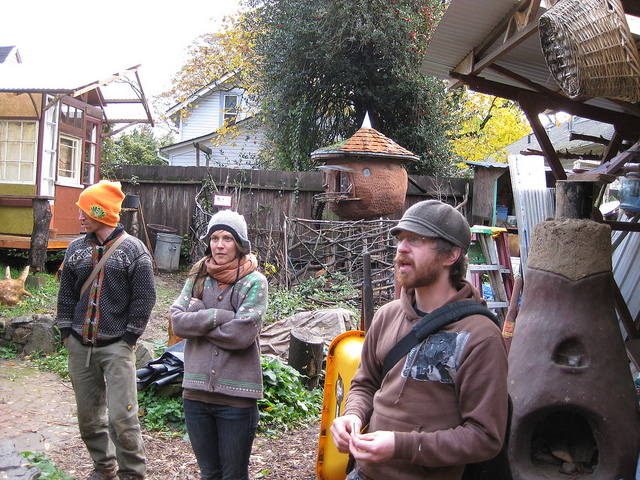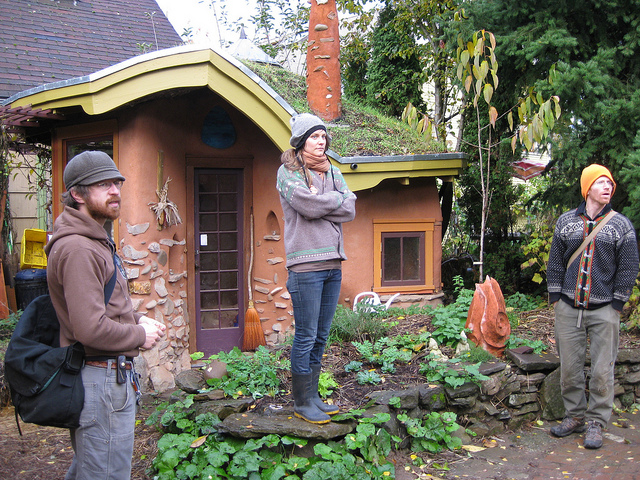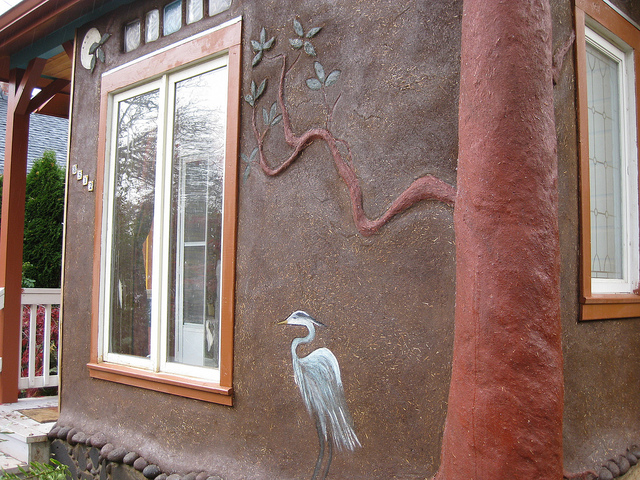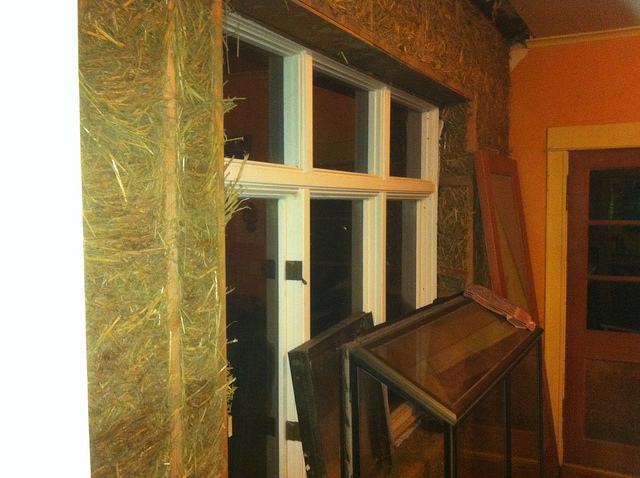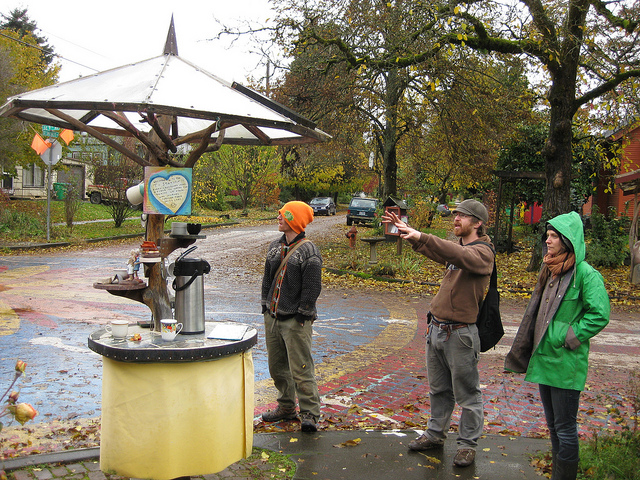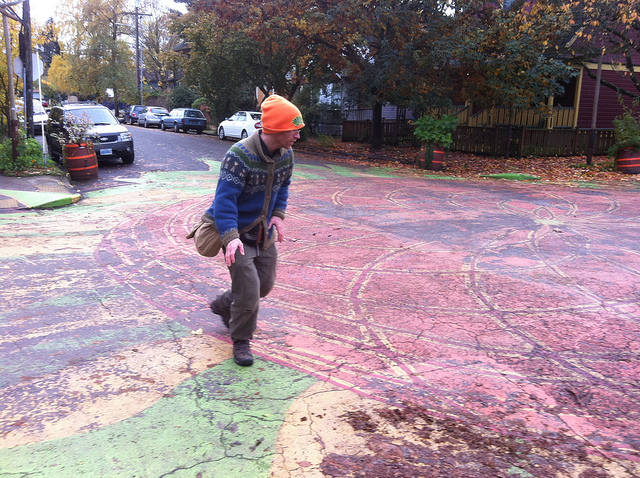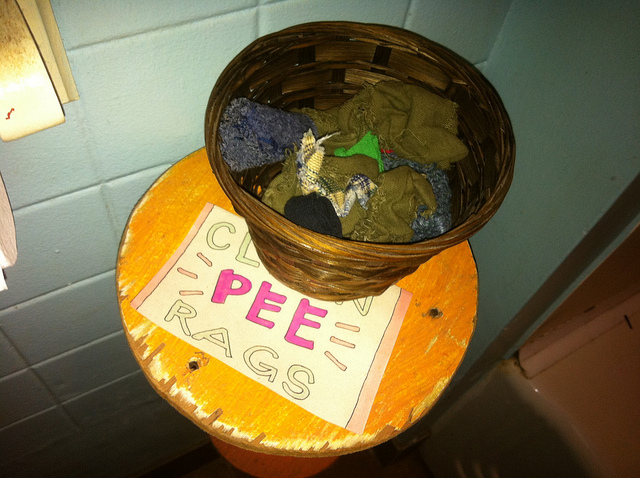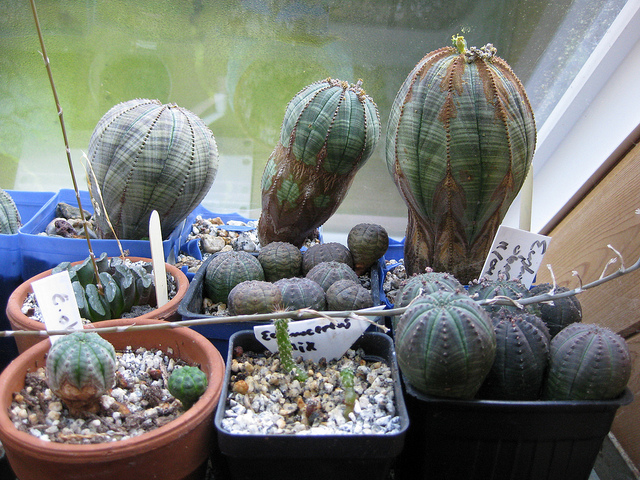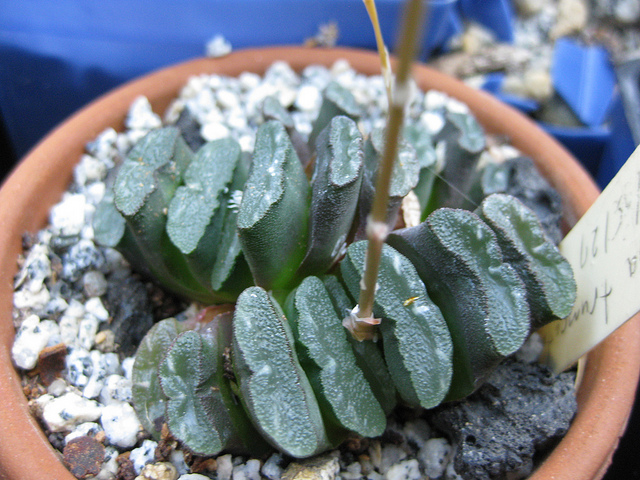I’ve just spent the better part of a week in Portland Oregon, hanging out amidst a living experiment that might just point the way to the future of the North American city. The Planet Repair Institute headquarters, once a typical West Coast style home on a typical West Coast street, has been modified by owner, architect Mark Lakeman and an ever-changing crew of cob builders, natural plasterers and urban permaculturalists into an earthy badger mound of mmm-mmm, organic goodness. Lakeman and his many collaborators espouse a kind of participatory architecture in which everyday people learn how to use common natural materials such as straw and clay to make architectural interventions that help humanize urban neighborhoods. The result is a kind of re-organic-ization of the built environment, a softening of the predominantly rectangular aesthetic with blobby, communal pizza ovens, loaf-like street corner benches and hobbit-worthy backyard pavilions. These cheerful earthen structures, encrusted with whimsical mosaics and botanically themed bas reliefs, may have the form and texture of supersized Christmas cookies, but I believe they also suggest something much more profound. Here is a handmade, participatory architecture that seeks to re-design the city from the bottom up, in marked opposition to the traditional top-down impositions of architects and urban planners. The handmade nature of the building technique invites participation, and the constructions take on the character of those who work on them, a truly open source methodology that, with minimal instruction, even young children can learn by molding clods of mud into the cob material that can be then patted into almost any shape imaginable. As an added bonus, the clay used is in abundant supply at local cemeteries and can be had for the asking. It is an inevitable byproduct of the many holes that tend to be dug in that business. The sand and straw constituting the rest of the mix are likewise easily sourced and are of course inherently natural and biodegradable.
Aside from the biomorphic look and the participatory building process, I think it important to point out that Planet Repair’s architectural methodology is often used to ‘re-skin’ existing structures, making them more ecologically sustainable by adding substantial insulation and thermal mass to both the insides and the outsides of buildings, as well as conferring a pleasant, natural aesthetic. The inside walls of the front room at Lakeman’s southeast Portland home have been retrofitted in an extra layer of stuffed straw soaked in a slip of clay, considerably upping the building’s ‘R’ value and giving it a lovely grassy ambiance. Out the back, his office in the former garage has been ‘frosted’ on its outside walls like a yummy birthday cake with layers of earth-toned cob replete with arboreal design motifs. This is architecture as palimpsest, a refreshing contrast to the tear-down mentality of many urban designers who in the past have been all too eager to raze the embedded history of locality in the service of their personal vision. The re-use and re-skinning of existing structures has an environmental benefit as well, keeping demolition debris out of the waste stream and reducing the need for newly manufactured materials. Given the the global ecological and economic crises, this approach makes more and more sense.
The other Portlandia trend to watch is the increasing fashionability of unplugging from the power and sewage grids. Photovoltaic panels and homemade solar hot water heating systems festoon these nouveau urban pioneer villages, and there are numerous composting toilet and ‘humanure’ initiatives, where, at least in the one I toured, human waste was being re-processed into plant food in a surprisingly odorless, backyard set-up. As civic infrastructure continues to erode under government disinvestment and bureaucratic neglect, these do-it-yourself, autonomous methodologies will become a valuable part of the city’s ‘immune-system,’ and, if replicated and scaled up, might begin to stand in for the centralized systems we once relied on, as they collapse around us. Even in the short time I was there, Lakeman was given the heads-up by a municipal employee who warned him that leaf collection in Portland would soon be under the cut-back axe, and the city was examining the feasibility of downloading these duties to neighborhood volunteers. Lakeman’s response was to promptly organize a block wide, leaf-raking blitz, during which, in about an hour, a large group of us managed to rake up almost all the available biomass on the block’s sidewalks and streets to add to compost heaps and use as mulch on communal garden plots.
The strategies of ‘block-repair’ and ‘intersection repair’ are key components of Lakeman’s architectural activism. In addition to installing cob structures and edible plantings around Portland intersections, he has overseen the painting of the asphalt surfaces of the intersections themselves with colorful, circular, crowd-sourced murals that calm the traffic and turn previously generic crossroads into pedestrian-friendly neighborhood meeting places. People like hanging out there and drivers tend to slow down. The intersection becomes a place to be rather than to simply pass through. This sort of conscious place-making revivifies the local and re-connects Portlanders to each other in shared urban experiences, alternative to the dominant commercial systems of exchange. Though the aesthetic tends a bit toward the Tolkienesque, the intersection repair projects are an unqualified success, and Lakeman is trying to export the idea to other cities such as Vancouver that have expressed interest. Lakeman’s ‘repair’ paradigm serves to realign the power relationship between the urban planning profession and the people and places that are traditionally subjected to it. By making planning and building participatory, democratic and fun, Lakeman’s techniques empower neighborhoods to re-invent themselves and implement their own site-specific solutions for how they want to be. In this light, perhaps, the failing civic infrastructure of North American cities could open up many new possibilities. But will the besieged municipal governments be willing to relinquish enough control? We probably won’t have to wait too long to find out.


